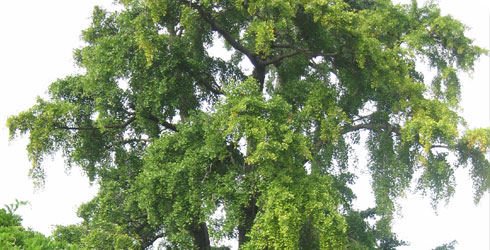Behaviour
At the end of the Cretaceous, Ginkgo diversity (the number of species) declined sharply. This decline coincided with the rise of the angiosperms (flowering plants).
Palaeontologists suspect that Ginkgo was not able to compete with angiosperms in the habitats they shared and that is why there is only one species still surviving today.
Modern ginkgos can reach up to 10m before producing any side branches, allowing them to grow higher than their competitors as quickly as possible.
However, angiosperm trees are much faster growing, reach sexual maturity more quickly and have a wider habitat range. This is what has made them such a successful group in almost every terrestrial environment.
Although Ginkgo biloba’s natural habitat is unclear due to human cultivation, it seems to be able to grow in harsh, disturbed environments, just like its ancestors, and this might be the key to its survival into the present day.
